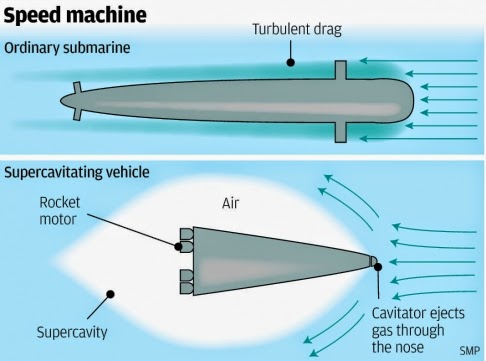The Chinese Challenge
- A nuclear armed China is in no danger from attack by any country, but the military build-up goes on and on.
Communist China has moved a step closer to creating a supersonic submarine that could travel from Shanghai to San Francisco in less than two hours reports the South China Morning Post.
New technology developed by a team of scientists at Harbin Institute of Technology's Complex Flow and Heat Transfer Lab has made it easier for a submarine, or torpedo, to travel at extremely high speeds underwater.
 |
| "I can't hear you. China is doing what?" |
Li Fengchen, professor of fluid machinery and engineering, said the team's innovative approach meant they could now create the complicated air "bubble" required for rapid underwater travel. "We are very excited by its potential," he said.
Water produces more friction, or drag, on an object than air, which means conventional submarines cannot travel as fast as an aircraft.
However, during the cold war, the Soviet military developed a technology called supercavitation, which involves enveloping a submerged vessel inside an air bubble to avoid problems caused by water drag.
A Soviet supercavitation torpedo called Shakval was able to reach a speed of 370km/h or more - much faster than any other conventional torpedoes.
In theory, a supercavitating vessel could reach the speed of sound underwater, or about 5,800km/h, which would reduce the journey time for a transatlantic underwater cruise to less than an hour, and for a transpacific journey to about 100 minutes, according to a report by California Institute of Technology in 2001.
However, supercavitation technology has faced two major problems. First, the submerged vessel has needed to be launched at high speeds, approaching 100km/h, to generate and maintain the air bubble.
Read More South China Morning Post
 |
| Chinese Aircraft Carrier Programme In July 2011, a Chinese official announced that two aircraft carriers were being built at the Jiangnan Shipyard in Shanghai. On 21 May 2012, Taiwan's intelligence chief Tsai Teh-sheng told the Legislative Yuan that the PLA Navy plans to build two carriers, scheduled to start construction in 2013 and 2015 and launch in 2020 and 2022 respectively. |


No comments:
Post a Comment